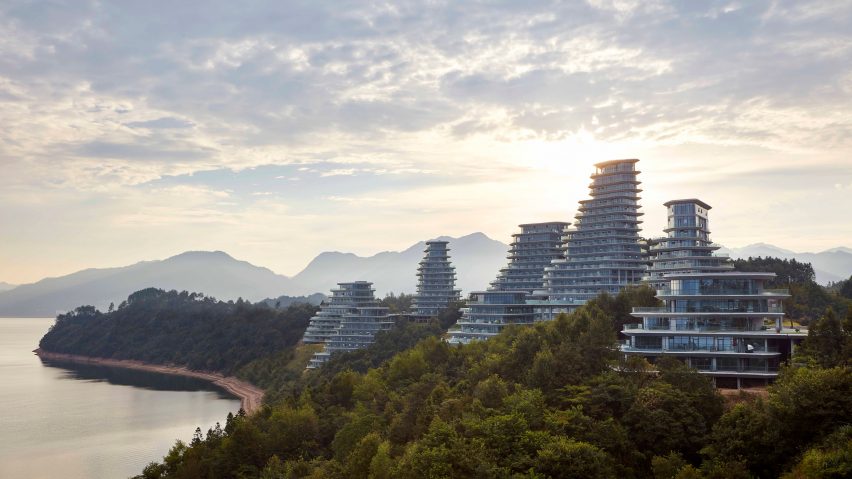
MAD's Huangshan Mountain Village photographed by Hufton + Crow in the dawn light
Photographer Allan Crow battled treacherous terrain, high humidity and swarms of insects to capture these images of MAD's latest project – a group of topography-inspired housing blocks in China's Huangshan mountain range.
Officially unveiled earlier this month, Huangshan Mountain Village is a housing complex on the shore of Taiping Lake, designed by MAD to mimic the granite contours of the mountain landscape.
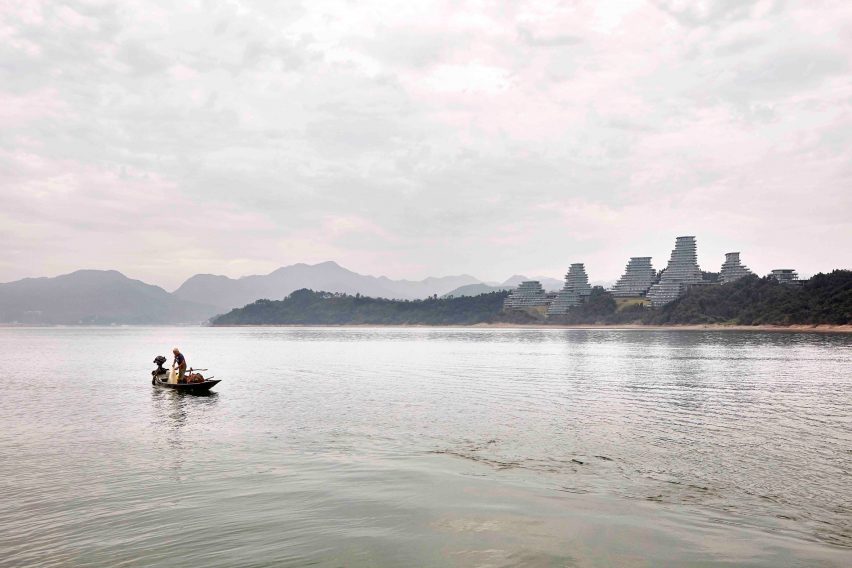
Crow, co-founder of photography studio Hufton + Crow, captured the project shortly after completion. Due to the scale of the project, as well as the popularity of the location, the shoot took him three days to complete.
"It was an epic shoot," the photographer told Dezeen. "It was 35 to 38 degrees the whole time, it was very hot. It was very physical – one of those that keeps you fit."
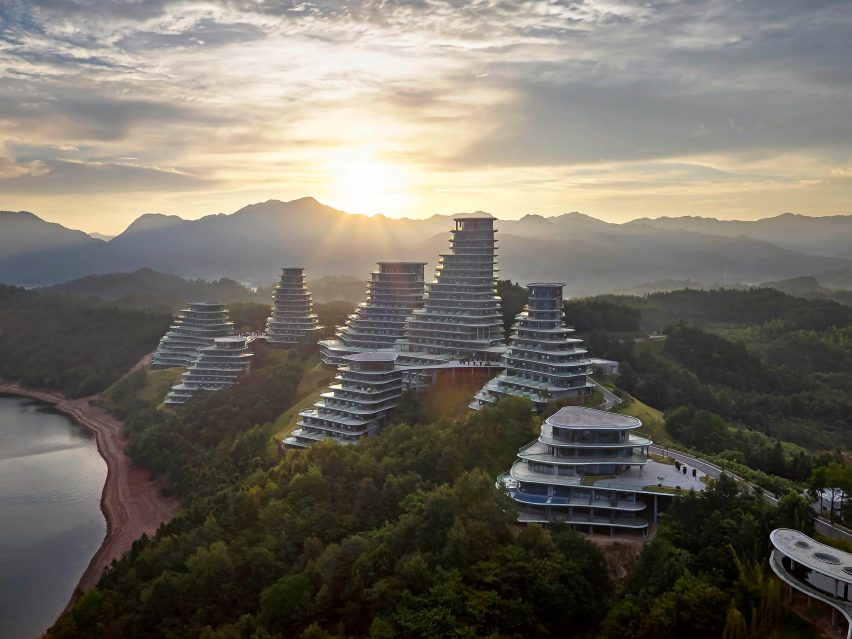
Crow flew in to Shanghai before making the nine-hour drive to the remote rural location.
One of the first challenges he had to overcome was the steamy tropical air, which fogged the camera lenses.
The heat and humidity were compounded by the long days. Crow needed to be up to shoot the sunrise at 4.30am, and the summer days meant sunset wasn't until late.
"I knew I'd put a shift in when I'd finished, my body was aching a little bit. It was long days to be lugging your lenses up and down the mountain," said Crow.

Finding the right angle to capture the unique shape of the buildings silhouetted against the granite mountaintops was also proved problematic.
"It's difficult to get back from the project because it's right on the lake, and sort of on a cliff as well," explained Crow. "As soon as you try and move away the ground descends steeply."
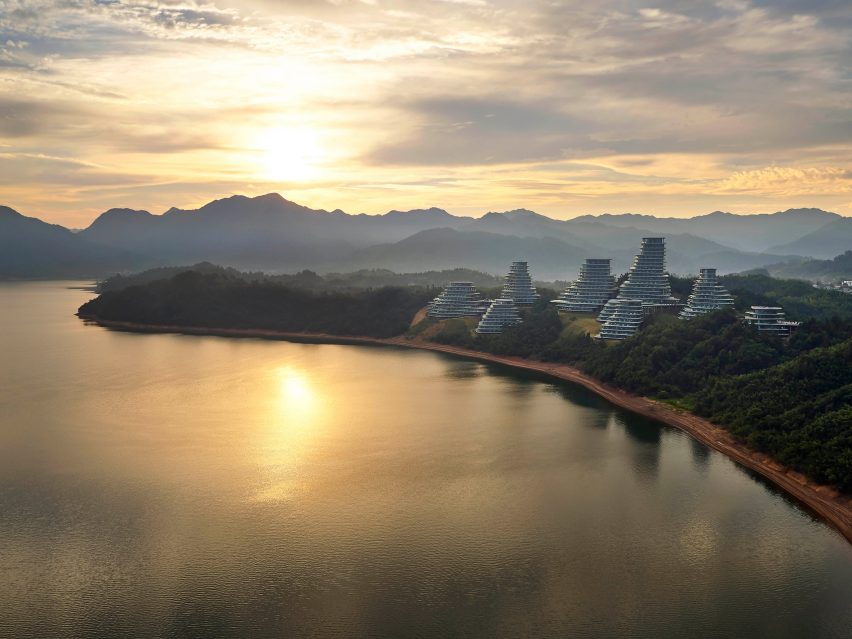
To get the images, Crow improvised with a combination of drone footage and shooting from a boat out on the lake.
"We've done a few jobs with MAD now and luckily they're quite keen to get drones involved," said the photographer. "There's a hotel nearby, and we went on the roof and flew the drone from the roof of the hotel and over the lake."
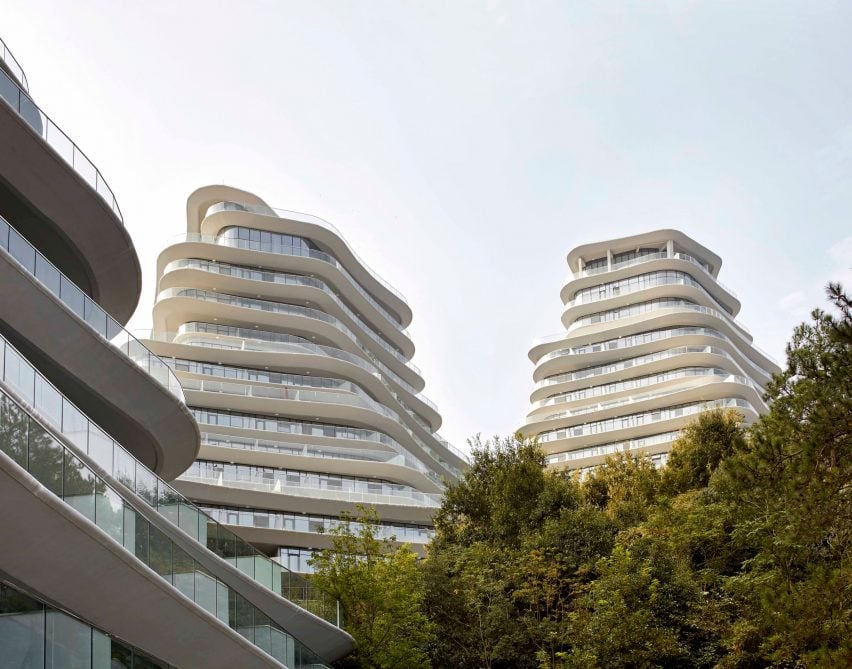
The location was so remote that Crow was unable to rent and transport the larger, eight-blade flying platforms he would normally mount a DSLR camera onto. Instead, he used a smaller, DJI drone with its own in-built camera.
"We got a boat out as well. The architect mustered up a boat from somewhere and we did a few trips out on to the lake," he said.
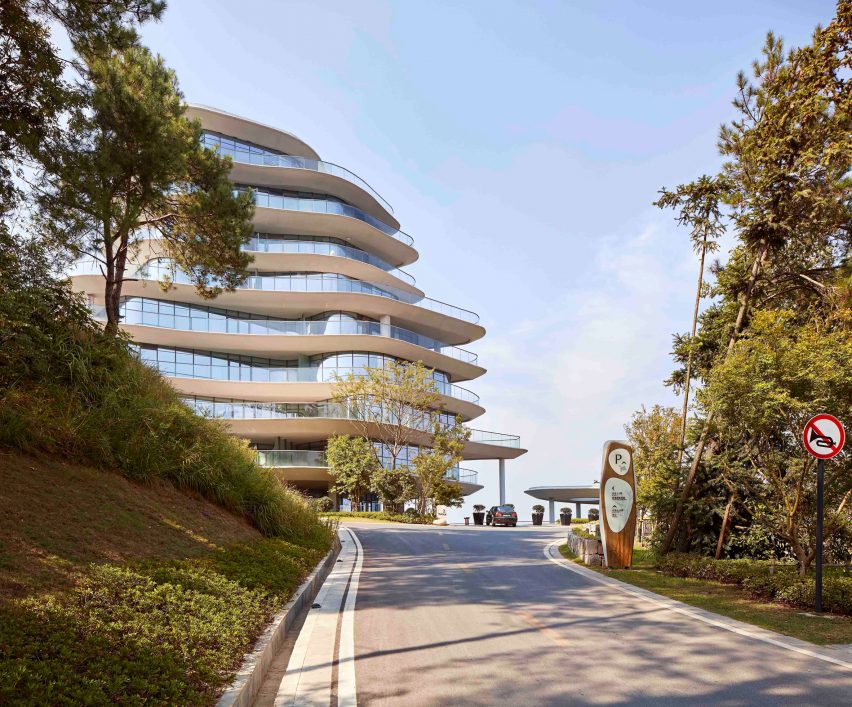
The boat in question was a local fisherman's speedboat, which made racing to catch the dawn light that bit easier. One of the first mornings they awoke to find a thick fog obscuring the view.
"You could hardly see the lake," recalled Crow. "It would have been a bit soul destroying to have travelled that far just to have that."
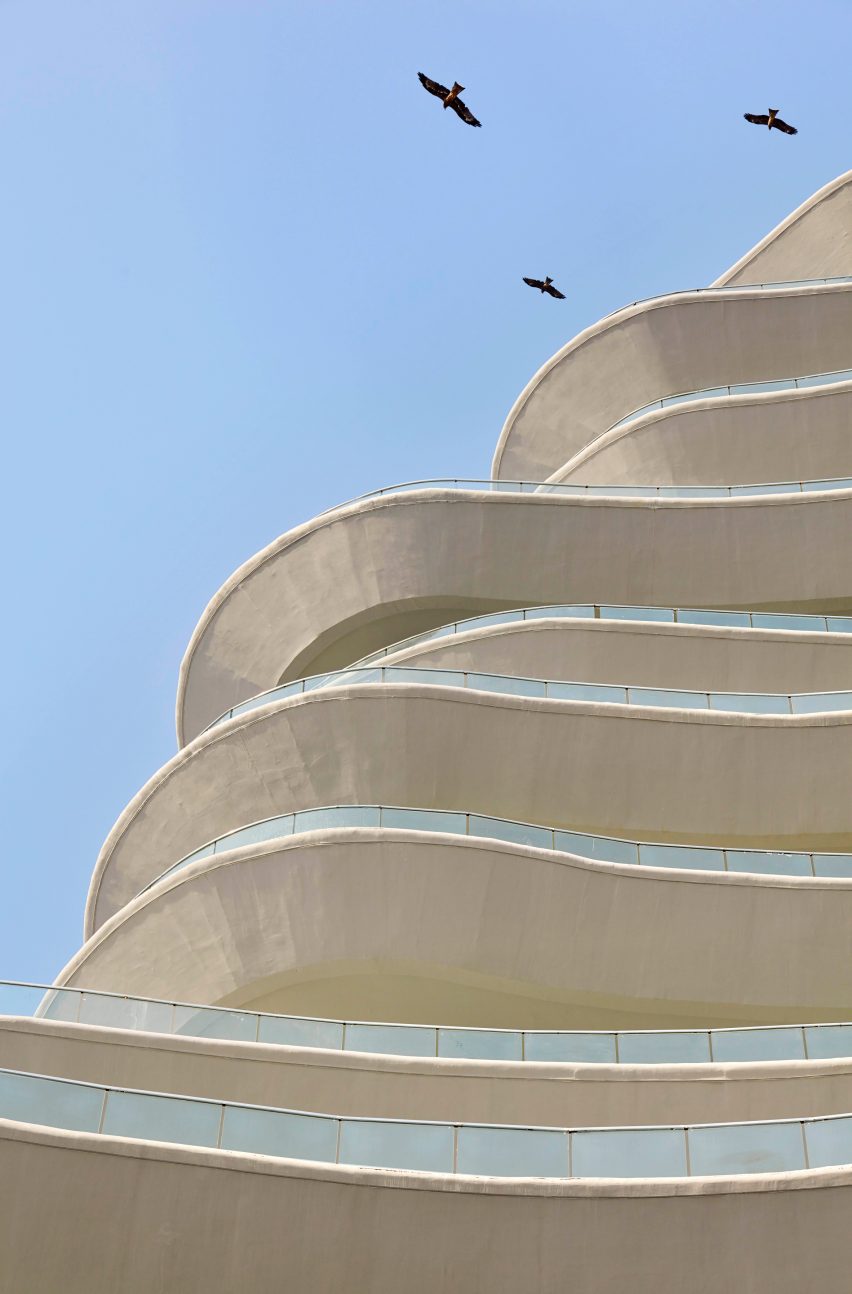
The biggest challenge Crow faced, however, proved to be the local wildlife. The photographer was spending the nights in some of the almost-finished apartments in the complex.
"I made the mistake of leaving my light on with the window open and went out," he said. "It was like something out of an Alfred Hitchcock movie. I came home and there were thousands of moths."
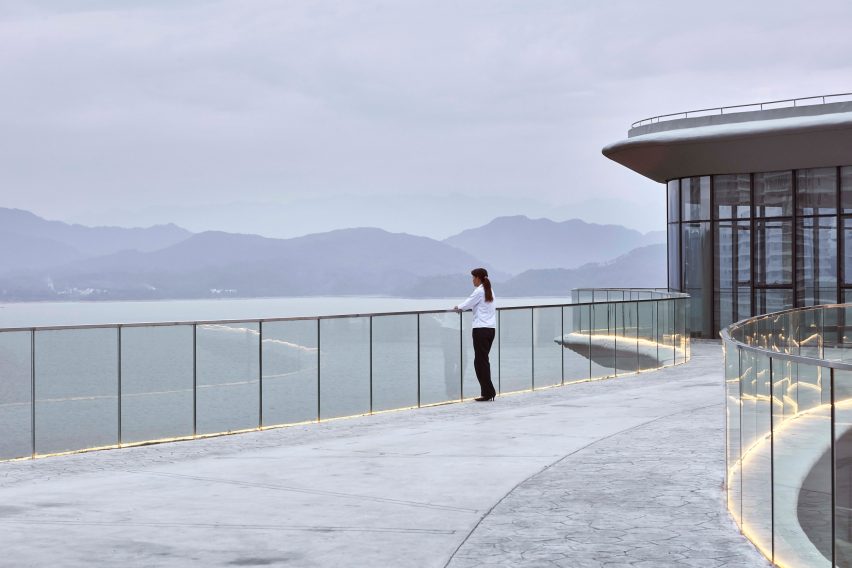
"So that's one of my lasting memories of that shoot: being attacked by moths," joked Crow. "It definitely was an adventure!"
Crow founded his studio with fellow photographer Nick Hufton. The pair have been enthusiastic adopters of technology – in a previous interview with Dezeen, they said digital cameras and drones have completely changed the field of architectural photography.
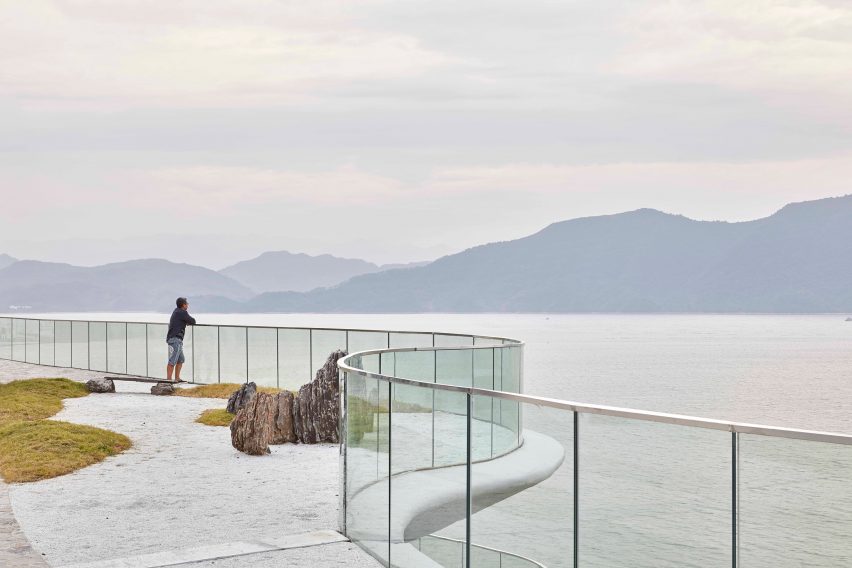
They previously photographed another project for MAD – the sinuous Harbin Opera House in northeast China.
Like Huangshan Mountain Village, that project was also designed to mimic the forms of the landscape. It is an approach that MAD often adopts, with other examples including the mountain-inspired Chaoyang Park Plaza in Bejing.
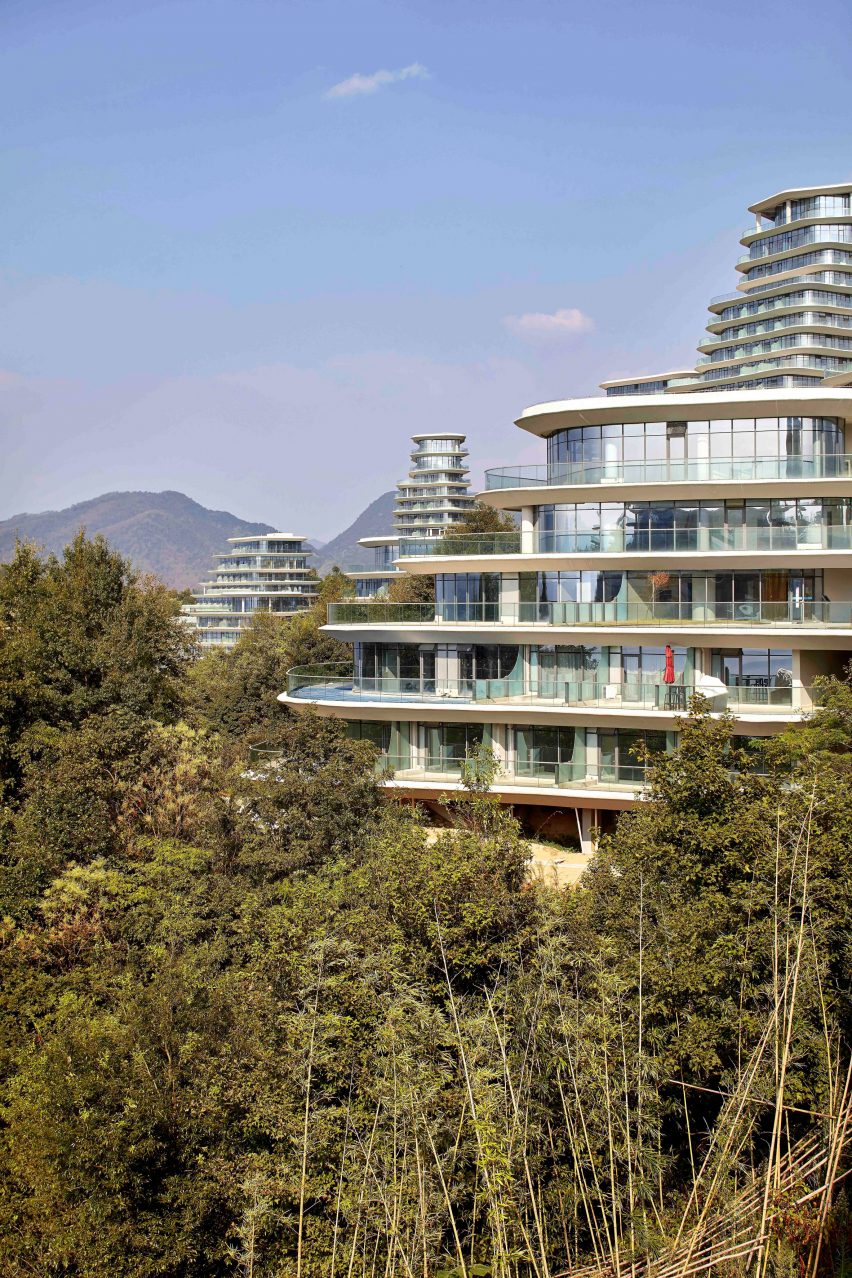
MAD founder Ma Yansong recently told Dezeen that architects should be shaping the future. "Architects should be visionary," he said.